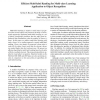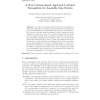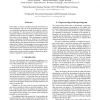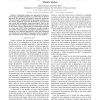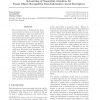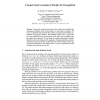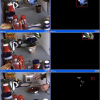ICCV
2009
IEEE
14 years 1 months ago
2009
IEEE
Multi-label learning is useful in visual object recognition when several objects are present in an image. Conventional approaches implement multi-label learning as a set of binary...
CORR
2010
Springer
14 years 3 months ago
2010
Springer
Adaptive sparse coding methods learn a possibly overcomplete set of basis functions, such that natural image patches can be reconstructed by linearly combining a small subset of t...
ICONIP
1998
14 years 4 months ago
1998
Dysfunction of the visual object recognition system in humans is briefly discussed and a basic connectionist model of visual object recognition is introduced. Experimentation in w...
ESANN
2007
14 years 4 months ago
2007
Inspired by recent findings on the similarities between the primary auditory and visual cortex we propose a neural network for speech recognition based on a hierarchical feedforw...
DAGM
2001
Springer
14 years 7 months ago
2001
Springer
A complete processing chain for visual object recognition is described in this paper. The system automatically detects individual objects on an assembly line, identifies their typ...
NOLISP
2007
Springer
14 years 9 months ago
2007
Springer
In this paper we propose a feedforward neural network for syllable recognition. The core of the recognition system is based on a hierarchical architecture initially developed for ...
ICRA
2007
IEEE
14 years 9 months ago
2007
IEEE
Abstract— This paper considers two approaches to the problem of vision and self-localization on a mobile robot. In the first approach, the perceptual processing is primarily bot...
ICML
2005
IEEE
15 years 4 months ago
2005
IEEE
This work provides a framework for learning sequential attention in real-world visual object recognition, using an architecture of three processing stages. The first stage rejects...
ECCV
2000
Springer
15 years 5 months ago
2000
Springer
We present a method to learn object class models from unlabeled and unsegmented cluttered scenes for the purpose of visual object recognition. We focus on a particular type of mode...
ICCV
2007
IEEE
15 years 5 months ago
2007
IEEE
We propose an approach to activity recognition based on detecting and analyzing the sequence of objects that are being manipulated by the user. In domains such as cooking, where m...
